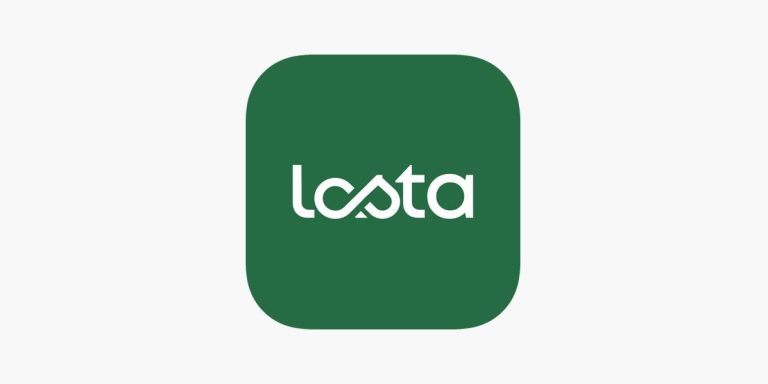Shaping Your Success: The Art of Cutting in Fitness
Cutting, often regarded as the art of sculpting one’s physique, transcends mere aesthetics; it’s a meticulous process that demands a strategic blend of nutrition, training, and a steadfast mindset. In this blog we delve into the depths of understanding cutting, setting meaningful fitness goals, and navigating the mental and emotional nuances that accompany this transformative endeavor.
Join us as we unravel the layers of this art form, aiming not just for a change in appearance but a holistic evolution that encompasses body and mind.
What is Cutting?
Cutting in the realm of fitness refers to a targeted approach to reducing body fat while maintaining or even building lean muscle mass. Unlike generic weight loss, cutting involves a strategic and systematic process to reveal the muscle definition underneath the adipose tissue. It is a phrase often employed by bodybuilders, athletes, and fitness enthusiasts to achieve a lean, sculpted physique.
During a cutting phase, individuals typically aim to create a caloric deficit, where the calories burned exceed those consumed. This prompts the body to utilize stored fat for energy, facilitating fat loss. However, the challenge lies in striking a balance to preserve muscle mass and achieve a toned appearance.
The Science Behind Cutting
The science behind cutting revolves around the principles of energy balance and metabolism. To shed body fat, one must consume fewer calories than the body expends, creating a negative energy balance. This prompts the body to tap into its fat stores for energy.
Additionally, the macronutrient composition of the diet plays a crucial role. Adequate protein intake is essential to preserve muscle mass, while a controlled intake of carbohydrates and fats ensures a sustainable and effective cutting process.
Metabolically, cutting engages both aerobic and anaerobic pathways. Cardiovascular exercises enhance calorie expenditure, while strength training helps in maintaining or building muscle mass, thereby supporting the overall fat loss process.
Different Approaches to Cutting
Here are the different approaches to cutting

1. Traditional Cutting Methods
Traditional cutting methods often involve a straightforward approach, focusing on calorie restriction and increased physical activity. This may include reducing overall calorie intake, emphasizing whole foods, and incorporating steady-state cardio exercises. While effective, these methods may sometimes neglect the importance of macronutrient distribution and targeted resistance training.
2. Modern Cutting Techniques
In contrast, modern cutting techniques have evolved to be more nuanced and personalized. These approaches recognize the significance of maintaining muscle mass by emphasizing protein-rich diets and incorporating high-intensity interval training (HIIT) for efficient fat burning. Modern cutting also leverages scientific advancements, such as tracking tools and apps, allowing individuals to monitor and adjust their strategies based on real-time data.
Setting Your Fitness Goals
Before embarking on the transformative journey of cutting in fitness, it’s imperative to clearly define your objectives. Your goals act as the compass guiding your efforts, shaping the trajectory of your fitness journey. Whether it’s achieving a specific body fat percentage, enhancing muscle definition, or simply adopting a healthier lifestyle, articulating your goals provides a tangible target to strive for.
Consider the specificity of your objectives – the more precise and measurable they are, the easier it becomes to track your progress. This could involve setting a target weight, outlining desired body measurements, or determining performance benchmarks in your fitness routine. Clarity in your objectives not only motivates you but also provides a roadmap for the steps needed to reach your destination.
Importance of Realistic Goals
In the pursuit of fitness success, realism serves as a cornerstone. Setting realistic goals is crucial for maintaining motivation and ensuring sustainability throughout your cutting journey. While aiming high is commendable, it’s equally important to ground your goals in the realm of achievability.
Realistic goals consider factors such as your current fitness level, lifestyle constraints, and the time frame you’ve set for achieving them. Unrealistic expectations can lead to frustration and burnout, hindering progress rather than propelling it. By setting achievable milestones, you foster a sense of accomplishment, laying the foundation for continued success.
How Cutting Fits into Your Overall Fitness Plan
Cutting, as a distinct phase in fitness, is a puzzle piece in the larger mosaic of your overall fitness plan. Understanding how cutting aligns with your broader fitness objectives ensures a cohesive and balanced approach. Consider the symbiotic relationship between cutting and bulking phases, recognizing that each plays a crucial role in sculpting your desired physique.
Incorporate cutting into your overall fitness plan by establishing a seamless transition from muscle-building phases to fat-loss phases. This may involve cycling between periods of caloric surplus and deficit strategically. Additionally, weaving cutting into your routine allows for a dynamic and sustainable approach, preventing plateaus and promoting continual progress.
By viewing cutting as an integral part of your holistic fitness plan, you create a roadmap that aligns with your long-term objectives. This perspective fosters a sense of continuity, emphasizing that cutting is not a standalone endeavor but rather a strategic component in the ever-evolving journey toward optimal health and fitness.
Supplements for Cutting
Embarking on a cutting phase requires a meticulous approach to nutrition, and for many, best cutting supplements play a supportive role in achieving optimal results. While it’s essential to prioritize whole foods, certain supplements can enhance the effectiveness of your cutting regimen.

1. Protein Supplements:
Protein intake is crucial during cutting to preserve lean muscle mass. Whey protein, in particular, is a convenient and fast-absorbing source that aids in meeting protein requirements. It supports muscle recovery and helps curb hunger, making it an excellent addition to a cutting diet.
2. Branched-Chain Amino Acids (BCAAs):
BCAAs, comprising essential amino acids like leucine, isoleucine, and valine, are vital for muscle preservation during a caloric deficit. They support protein synthesis and minimize muscle breakdown, making them beneficial for those engaging in intense training while cutting.
3. Omega-3 Fatty Acids:
Omega-3s, often found in fish oil supplements, offer various health benefits during cutting. They assist in managing inflammation, support cardiovascular health, and may aid in fat loss. Including omega-3 supplements complements a well-rounded cutting plan.
4. Pre-Workout Supplements:
Maintaining energy levels during workouts becomes crucial during a cutting phase, especially when caloric intake is restricted. Pre-workout supplements, containing ingredients like caffeine and beta-alanine, can provide the necessary boost to sustain intensity and focus in the gym. And with the appropriate knowledge on how long does pre-workout last, pre-workout pills containing caffeine and beta-alanine can provide the essential boost to maintain intensity and attention in the gym.
5. Multivitamins:
Caloric deficits may lead to micronutrient deficiencies. A quality multivitamin ensures that your body receives essential vitamins and minerals, supporting overall health and performance.
6. Thermogenic Supplements:
Thermogenics, often containing ingredients like caffeine, green tea extract, and cayenne pepper, are believed to boost metabolism and promote fat burning. However, their efficacy varies, and it’s essential to approach them with caution, considering individual tolerance levels.
7. Fiber Supplements:
Maintaining digestive health is integral during cutting. Fiber supplements can aid in satiety, regulate digestion, and support overall gut health, especially when dietary fiber intake may be limited.
8. Vitamin D:
Adequate vitamin D levels are crucial for overall health and may play a role in fat metabolism. If sun exposure is limited, a vitamin D supplement can be beneficial.
Cutting Prohormones
In the pursuit of a lean and sculpted physique during a cutting phase, some individuals explore the potential benefits of cutting prohormones. Prohormones are compounds that the body can convert into active hormones, often serving as precursors to muscle-building hormones like testosterone. While they have gained popularity in certain fitness circles, it’s essential to approach the use of cutting prohormones with caution and a clear understanding of their potential effects.
1. Definition and Mechanism:
Cutting prohormones are compounds that, when ingested, undergo conversion in the body to active hormones, particularly those associated with muscle growth and fat loss. These substances are designed to mimic the effects of hardcore anabolics but are often considered less potent.
2. Potential Benefits:
Proponents of cutting prohormones suggest several potential benefits, including increased muscle mass, enhanced fat loss, and improved overall body composition. These effects are attributed to the hormonal changes that occur in response to prohormone supplementation.
3. Risks and Side Effects:
Despite the potential benefits, the use of cutting prohormones comes with inherent risks and side effects. These may include hormonal imbalances, liver strain, cardiovascular issues, and the suppression of the body’s natural hormone production. It’s crucial to be aware of these potential consequences and monitor for any adverse effects.
4. Legality and Regulation:
The legal status of cutting prohormones varies by jurisdiction. In some places, these substances may be available over-the-counter, while in others, they may be classified as controlled substances. Understanding and adhering to local regulations is essential to avoid legal consequences.
5. Consultation with Healthcare Professionals:
Before considering the use of cutting prohormones, individuals should consult with healthcare professionals, including physicians and endocrinologists. These experts can assess the potential risks based on individual health profiles and provide guidance on the safe use, if at all.
6. Importance of Comprehensive Approach:
Cutting prohormones, if used, should not be viewed as a standalone solution. Their potential benefits can only be maximized when integrated into a comprehensive approach that includes a well-balanced diet, proper hydration, regular exercise, and adequate rest.
7. Alternatives and Natural Approaches:
Given the risks associated with cutting prohormones, individuals may consider alternative, natural approaches to cutting. Prioritizing a balanced diet, engaging in effective training, and incorporating proven supplements can contribute to achieving a lean physique without the potential risks associated with prohormone use.
Tailoring Your Workouts for Cutting
Tailoring your workouts for a cutting phase involves a strategic approach to training that aligns with your goal of preserving muscle mass while promoting fat loss. Focus on incorporating high-intensity, compound movements that engage multiple muscle groups. Emphasize resistance training to stimulate muscle retention and choose exercises that complement your cutting objectives.
1. Importance of Cardiovascular Exercise
Cardiovascular exercise plays a pivotal role in a cutting phase by enhancing calorie expenditure and promoting fat loss. Incorporate both steady-state and high-intensity interval training (HIIT) cardio sessions to maximize the benefits. Cardio helps create the necessary caloric deficit while improving cardiovascular health, making it a valuable component of any cutting workout routine.
2. Incorporating Strength Training
Strength training is a cornerstone of cutting workouts as it contributes to muscle preservation and definition. Focus on compound exercises such as squats, deadlifts, and bench presses to target multiple muscle groups simultaneously. Maintain a challenging but sustainable resistance to stimulate muscle growth and metabolic activity, crucial for effective fat burning.
3. Adaptations to Training during Cutting
Adapting your training during a cutting phase is essential to accommodate the changes in energy levels and recovery. Consider adjusting training frequency and volume based on individual recovery capacities. Listen to your body and avoid overtraining, as excessive stress can hinder progress and increase the risk of muscle loss. Prioritize quality over quantity in your workouts to maintain intensity without compromising form.
Mental and Emotional Aspects
Patience and consistency are foundational pillars in the mental and emotional landscape of a cutting journey. Recognize that achieving a lean physique is a gradual process, requiring time and dedication. Stay committed to your plan, understanding that visible results may take time to manifest. Consistency in your efforts, both in terms of nutrition and workouts, is key to long-term success. Embrace the journey, knowing that sustainable change is a product of persistent, day-by-day commitment.
Dealing with Setbacks
Setbacks are inevitable in any fitness journey, and cutting is no exception. Whether it’s a temporary lapse in diet, a missed workout, or unforeseen life events, setbacks are part of the process. Instead of viewing them as failures, consider them as opportunities for growth. Learn from setbacks, analyze what went wrong without self-judgment, and refocus on your goals. Developing resilience in the face of setbacks is crucial for maintaining a positive and forward-moving mindset.
Celebrating Small Wins
Amidst the challenges of cutting, celebrating small wins becomes a powerful motivator. Acknowledge and appreciate the progress, no matter how incremental. Whether it’s a gradual decrease in body fat percentage, an increase in strength, or a positive shift in mindset, these victories signify steps toward your overarching goal. Celebrating small wins reinforces a positive mindset, boosts confidence, and provides the motivation needed to persist in the face of challenges.
Summing Up
In conclusion, see cutting not just as a way to change your body, but as a transformative journey. Let your commitment echo in every step, and may your success in shaping your physique show the strength within you. The canvas is yours; color it with determination, and enjoy the masterpiece you create for yourself.





![[Fixed] Why is My Netflix in Spanish?](https://thetechyinfo.com/wp-content/uploads/2023/10/Why-is-my-Netflix-in-Spanish-768x415.jpg)

